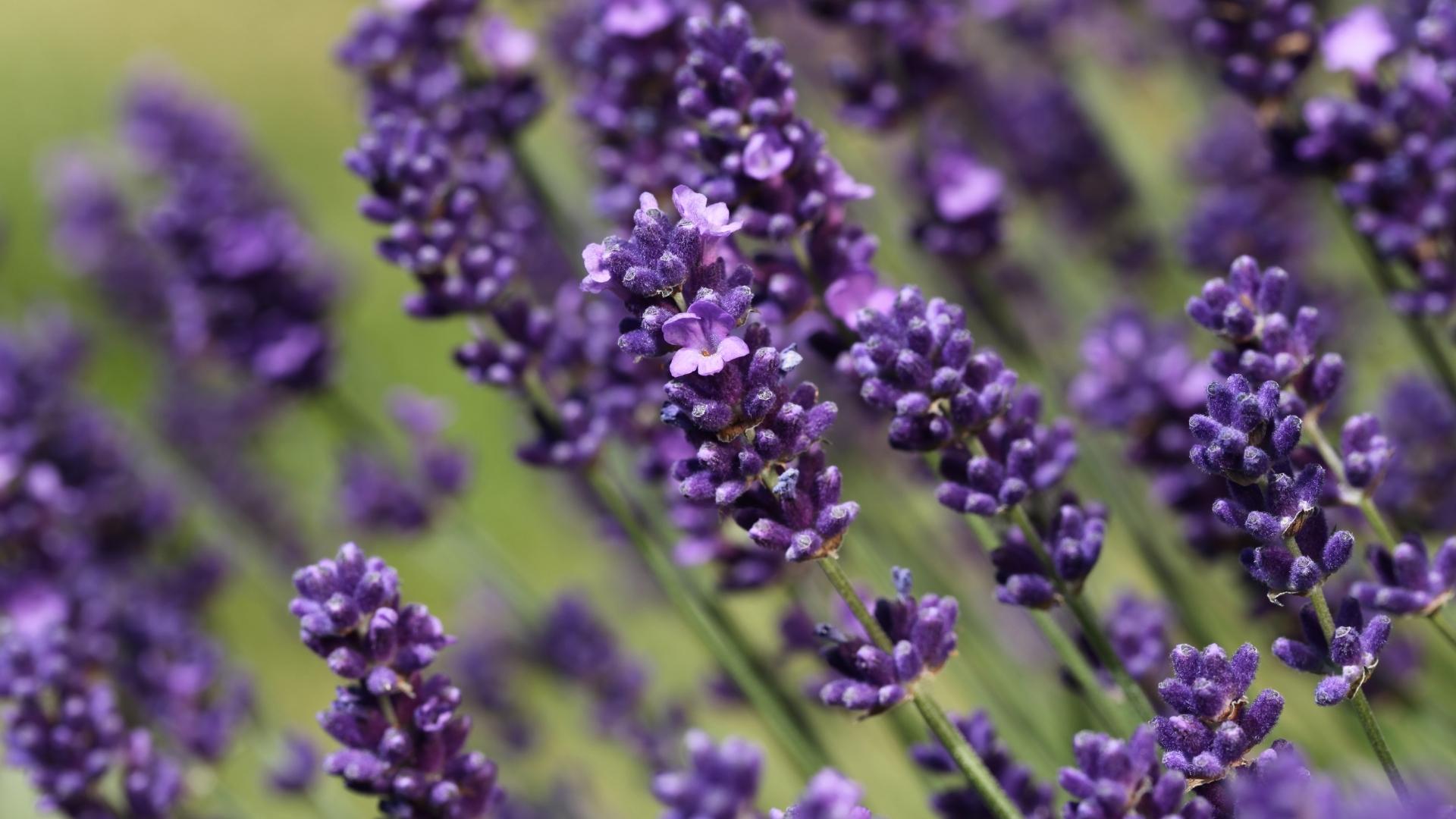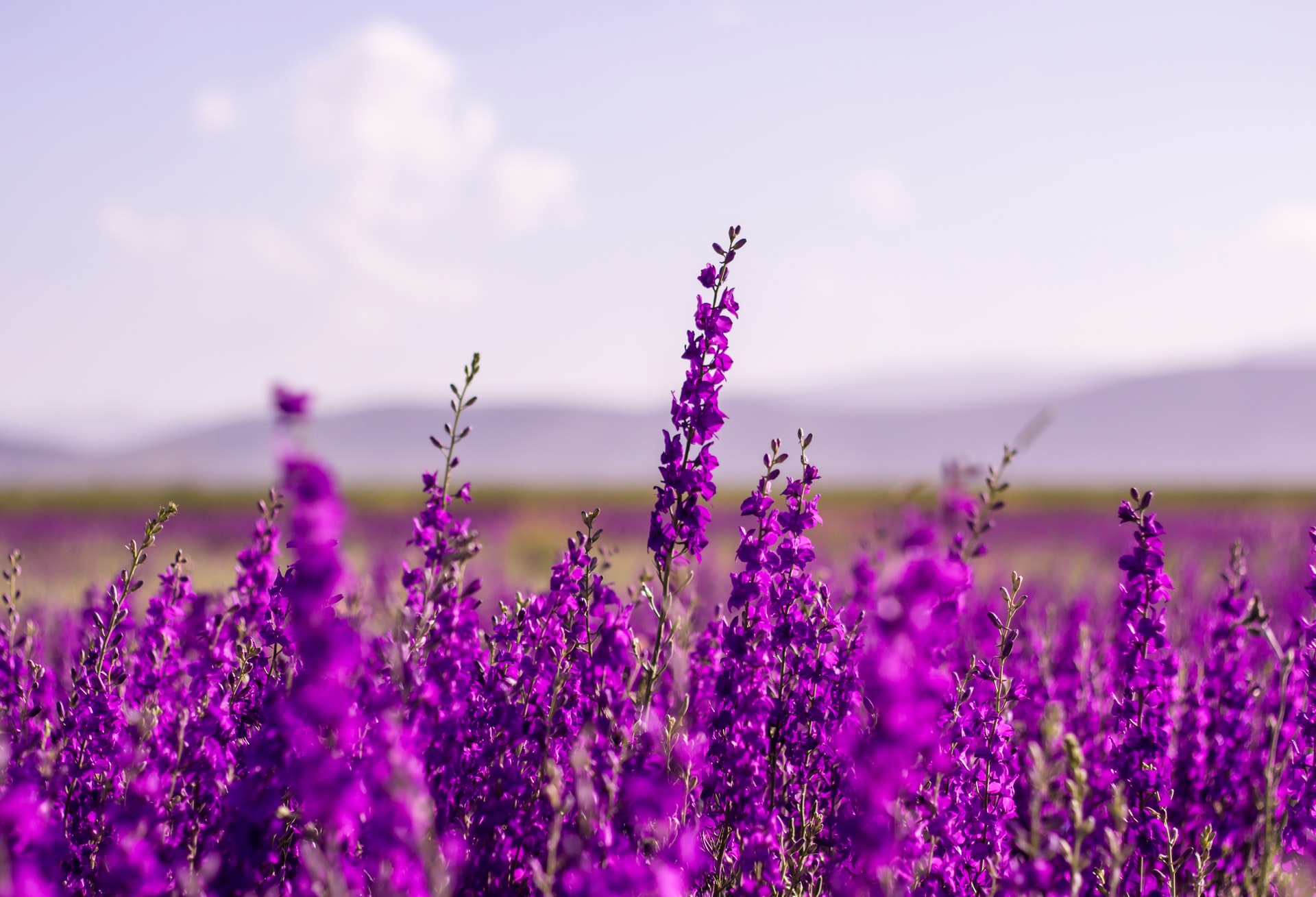Lavender is a quintessential plant for every garden. Easy to care for, beautiful to look at and heavenly to smell it ticks all the right boxes.
If you’re looking for a sign to add lavender to your garden this spring, this is it. We’re here to share with you a little bit more about English Lavender and Spanish Lavender and the difference between them so you can choose the best option for your garden.
English Lavender

English lavender, also known as True or Common lavender, can be characterized by its dark or light purple colour and fresh, aromatic scent. We all likely think of purple when we think of lavender’s colour, however, some of the hybrid forms of this plant are available in colours like white, pink, and violet-blue.
Planting English Lavender is easy to care for in the right conditions, and is best planted in the spring in hardy zones 5-8 – perfect for us here in the Lower Mainland. English Lavender typically grows two to three feet tall and due to their scent, these plants are great for keeping deer and other pests away. To see this type of lavender thrive, it’s best to make sure it is planted in soil that is a bit sandy and has great drainage.
Making the Most of Your English Lavender
English Lavender would make a great addition to herb or rock gardens, even as garden borders, but one of its most common uses is as a culinary herb for cooking. It is rich in fragrance and can add a sweet flavour to dishes, beverages, sweets, and so much more.
So, if you’re looking for something to do with your English lavender from your garden, try incorporating it into a recipe or two for a rich, lovely flavour. It’ll feel all the more rewarding knowing that it’s coming from something in your very own garden!
Lavender also looks great in fresh cut bouquets!
Spanish Lavender (Butterfly Lavender)

Spanish lavender, otherwise known as butterfly lavender, is an exciting lavender variety to include in your garden if you’re looking for something functional and extravagant. They are most recognizable by their dark purple flower heads, long stems, and vibrant, long “ears”. As you’ve probably guessed by now, Spanish Lavender is yet another highly-aromatic plant, and performs best in hardy zones from 9-11.
This plant thrives in full sun and dry to medium soil with good drainage. And for one of our favourite features of this plant – they’re the ultimate magnet for pollinators like bees and butterflies! So, if you want to create a true display in your butterfly garden this is the one to do so. They look beautiful mass planted, potted, or however else you please.
Spanish Lavender (Butterfly Lavender) Uses:
Similar to the other lavender varieties, Butterfly Lavender can be used as aromatherapy, cooking and in tinctures and oils. A pro tip to maximize the usage of this plant to its full potential is to dry it. Once dried, they can be used to incorporate in a series of creations whether you choose to incorporate them in some crafts, use in potpourri, make soaps, or for culinary reasons like making rubs and teas. If drying the plant feels like too much work – just toss a few sprigs into the cocktail of your choice!
Choosing the right lavender for you
At the end of the day, choosing the right lavender depends entirely upon your preference. There are some distinct differences between English and Spanish lavender, one being their looks and another being their uses.
If you’re seeking a lavender addition to your garden that is subtle with an impact, English lavender might be best for you. If you’re seeking a variety of lavender that is a bit more “showy,” and functional, Spanish lavender might work best for you, especially due to its exceptional ability to attract pollinators. The bright side is that regardless of what lavender you choose, planting and growing them should be the least of your worries.
Planting and Growing Lavender in Your Garden
Lavender is best planted in the early stages of spring, especially once any chance of frost has passed, however, it can be planted in the fall with careful care so that it can survive during the winter months.
Purchasing smaller lavender plants from a garden shop or nursery is much easier than growing lavender from the seeds. You can plant them 2 to 3 feet apart from each other in your garden, add some mulch or gravel, and watch them work their magic!
What’s great about lavender is that care is relatively easy. They can be watered once or twice a week after planting until the plants are fully established. If you find that your lavender starts to get a bit “leggy,” pruning can get them to the desired shape that you want, keep them tidy, and encourage new growth.
Free Gardening Resource
THE ULTIMATE GUIDE TO CLEMATIS!
Sign up for our newsletter and get your copy!

